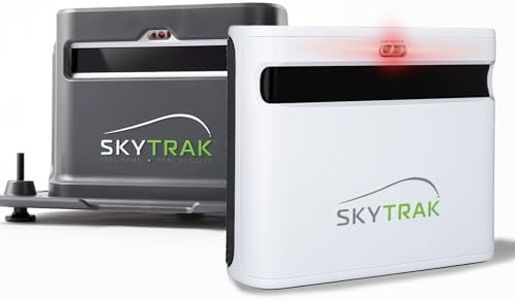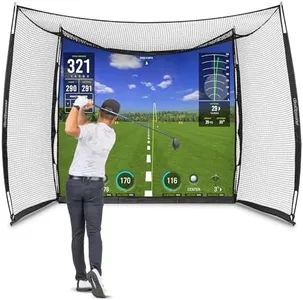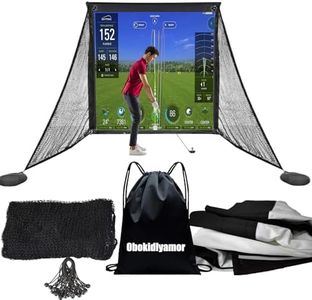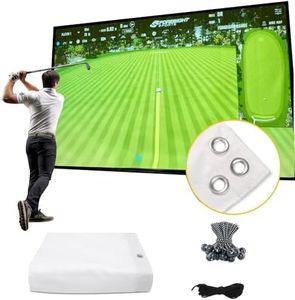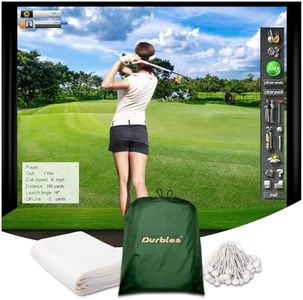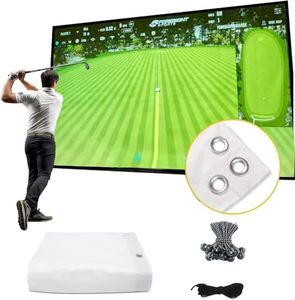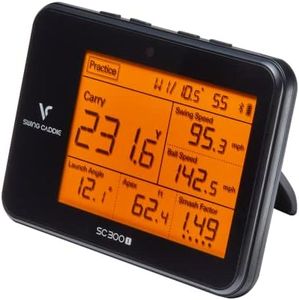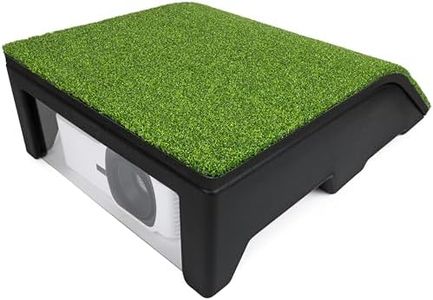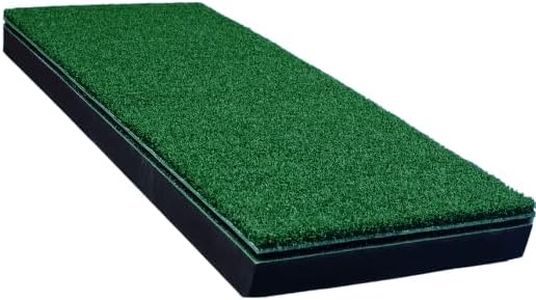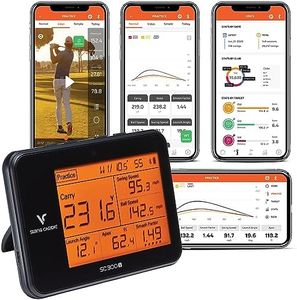We Use CookiesWe use cookies to enhance the security, performance,
functionality and for analytical and promotional activities. By continuing to browse this site you
are agreeing to our privacy policy
10 Best Golf Simulators
From leading brands and best sellers available on the web.By clicking on a link to a third party's website, log data is shared with that third party.
Buying Guide for the Best Golf Simulators
Choosing a golf simulator can be exciting, as it allows you to improve your game at home while having fun. It's important to look at your space, skill level, and personal goals before making a purchase. Whether you're training seriously or enjoying casual play with friends and family, knowing the main features and how each affects your experience will help you make a thoughtful decision. Let's break down the key specs you'll encounter when shopping for a golf simulator, so you can feel confident about your choice.Tracking SystemThe tracking system refers to the technology a golf simulator uses to monitor your swing, ball movement, and other data. Accurate tracking is crucial for realistic feedback and improving your skills. There are mainly two types: camera-based and radar-based systems. Camera-based systems work well in small spaces and are generally easier to set up, offering good accuracy for most users. Radar-based systems may require more room but tend to be highly precise and work better for outdoor use too. If you have limited space or want easy installation, camera systems are a good choice. If maximum accuracy and versatility are important to you and you have the room, radar systems may be preferable.
Space RequirementsSpace requirements describe the minimum area needed to set up your golf simulator properly. This includes both the physical size of the simulator and the recommended clearance for safe swinging. Simulators may need anywhere from a small bedroom-sized area to a larger basement or garage. Lower ceilings (below 8 feet) can make it difficult to swing comfortably, while tight side-to-side spaces can feel cramped. Before buying, measure your space carefully, including ceiling height, and select a simulator that fits well without making you feel restricted. Think about who will be using it and how much room they need to swing freely.
Simulation SoftwareThe simulation software is what brings the digital golf courses, practice modes, and data analysis to life. It determines what virtual courses you can play on, the graphics quality, and how data is displayed. Some software offers a wide range of real-world courses and skill games, while others might focus more on training features or have limited environments. Simpler software often runs well on basic computers and is easy to learn, while advanced software may require a powerful computer and offer deeper analysis. Choose a system that matches your interest—whether it’s playing famous courses, practicing specifics, or analyzing swing data in depth.
Golf Mat and Hitting SurfaceThe golf mat and hitting surface are the physical areas where you stand and hit the ball. The quality of the mat affects your comfort, the durability of your clubs, and how closely the feel matches outdoor turf. Basic mats may be firm and less forgiving, while premium options provide realistic turf textures and can be easier on your joints. If you’ll be using the simulator frequently, opt for a high-quality mat. For casual or infrequent use, a basic mat may suffice, but always ensure it’s large and sturdy enough for safe swings.
Screen and Projector QualityThe screen and projector determine how clear and immersive your golfing experience is. A good impact screen should be durable enough to withstand repeated ball strikes, while the projector influences the sharpness and brightness of virtual images. Lower-quality screens may wear out quickly and reduce image quality, and a dim or low-resolution projector can make it harder to judge your shots. If you value realistic graphics and plan to use the simulator in a well-lit room, look for a high-brightness projector and durable screen. For basic practice, a moderate setup may still provide an enjoyable experience.
Data Feedback and AnalysisThis specification covers the level of detail the simulator provides about your shots, such as club speed, ball spin, launch angle, and shot shape. Detailed feedback is valuable for players wanting to analyze and improve their game, while casual users may be content with basic stats like distance and direction. Systems range from simple feedback displays to advanced analytics that track dozens of metrics. Match the depth of analysis with your interest and commitment to improvement. Serious golfers benefit most from detailed feedback, while beginners might prefer straightforward, easy-to-understand statistics.
